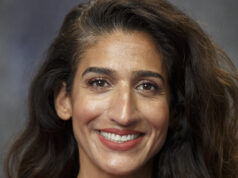
Cases of cardiovascular disease are rising across the U.S., with large disparities seen in ethnic groups and poorer geographical areas. In combination with increased burnout in the vascular workforce, this has led to a public health crisis that requires immediate action. These were among the main takeaways from a presidential address delivered by Michael S. Conte, MD, at the 2021 Western Vascular Society (WVS) annual meeting in Jackson Hole, Wyoming (Oct. 16–19).
Ensuring the vascular health of patients is crucial to ensure freedom from pain, disability, physical limitations, emotional stress, and limb loss, to name a few, Conte explained. It is vital patients experience freedom from both mortality due to vascular issues, and escape the treatment burden, to manage quality of life, the outgoing WVS president said. Time away from the hospital is vital to facilitate this; however, vascular health harbors many different perspectives, including patient preference, the primary healthcare provider, the government, and public health agencies, he continued. It is important to consider that the social determinants of health contribute greatly to vascular health.
Determinants include patient income status, education, food security, and social environment. Although this is widely known by healthcare professionals and the general public, there is a lack of information regarding vascular health in circulation, Conte communicated.
The number of cases of heart disease and stroke across the U.S. is rising. In 2010, the American Heart Association (AHA) developed Life’s Simple Seven (LS7), as a measure of cardiovascular health. The seven indicators are smoking, diet, physical activity, body mass index (BMI), blood pressure, total cholesterol, and fasting glucose.
Conte presented data relating to these indicators in the U.S. population. The U.S. performed well with smoking, with numbers at an ideal rate. In contrast, the majority of the population performed extremely poorly compared to those performing ideal or intermediate, explaining that “BMI and physical activity were poorer in adults, significantly impacting cardiovascular health.”
Healthcare disparities
“It is apparent physical activity that BMI, diabetes, and smoking rates are all increasing, according to past trends, with smoking rates presenting the highest in the U.S., compared to all indicators. This rise in indicators will therefore hold impacts on future health and requires attention,” explained Conte. Peripheral vascular disease affects one in 18 adults (25+ years) worldwide, and 8.5 million Americans.
One-third of diabetic Americans over 50 years old also have peripheral arterial disease (PAD), with up to half not displaying symptoms. Of these individuals, one in three will die within five years following diagnosis, with one in three admitted to hospital for myocardial infarction (MI) or stroke, with low ankle-brachial index (ABI).
There are large vascular health disparities among ethnic groups, with African Americans and Native Americans particularly affected. “Amputation in Black Americans sits at two-to-three times higher than the national average,” stated Conte.
Patients with PAD are also commonly overlooked, he said. It is indicated that in comparison to MI or stroke, in patients with PAD, following the event (30 days) fewer patients received statins and less aggressive medical care, despite ongoing research. Not only does this impact ethnic groups, but females and the older population (80+ years) are also highly affected, Conte said.
In May last year, Lizzie Presser of ProPublica shed light on the present amputation epidemic faced by Black Americans in the realm of the mainstream press, Conte noted. Presser detailed a finding that “Hispanic and Black patients experience a greater disease severity at clinical presentation (n=834),” with one in four experiencing amputation following hospitalization from PAD, compared to one in seven in non-Hispanic white patients (n>140,000).
Across all Americans, the rate of diabetes is increasing, with around 10% diagnosed. Conte further pointed out that lower-extremity amputation rates reduced in the 2000s, increasing in 2010, with 60,000 patients receiving toe amputation in 2015. When analyzing amputation patterns across geographical locations, in California, there is a positive relationship between lower-extremity amputation rates and poorer areas, he said. Conte pointed out that in areas “with increased poverty levels, amputation rates are higher.” Additionally, in areas of the U.S. where more Black individuals reside, amputation rates are higher, indicating a clear health inequality. Research also found that Black Americans with vascular disease are less likely to receive revascularization, with white Americans receiving treatment at a higher rate. In this light, Conte concluded there is a positive “strong relationship between Black individuals, lower-income and increased amputation risk.”
‘Lend a hand, save a leg’
To tackle this disparity, the Society for Vascular Surgery (SVS) launched the Vascular Volunteers in Service to All (VISTA) initiative, with the catchphrase, “lend a hand, save a leg,” Conte continued. VISTA launched pilot programs across underserved areas of the country like the state of Oklahoma in an attempt to drill into the underlying issues.
There have been several initiatives that aim to work with these vascular health disparities. The WVS Diversity, Equity and Inclusion Committee launched a program in 2021, based on “healthcare disparities in vascular surgery: identifying inequalities and improving outcomes,” Conte said.
The Society for Vascular Surgery (SVS) has also taken steps to tackle this issue, with member numbers currently increasing. However, only half of these members are practicing vascular surgeons in the U.S.
Conte reported a public health crisis of physician burnout: It is predicted that until 2040, the U.S. will face a shortage of surgeons, leading to increased cases of burnout, he said—echoing a theme reported at other recent regional meetings.
More than 50% of U.S. physicians self-reported burnout, highlighting the extent of the problem.
With the increasing prevalence of cardiovascular disease, burnout in vascular surgeons presents a growing public health concern, due to the impact on the adequacy of the vascular surgery workforce, he added.












